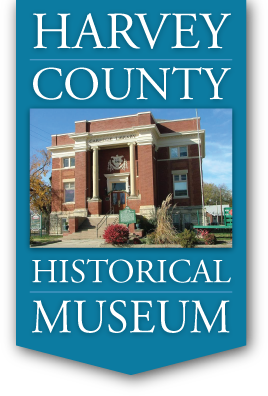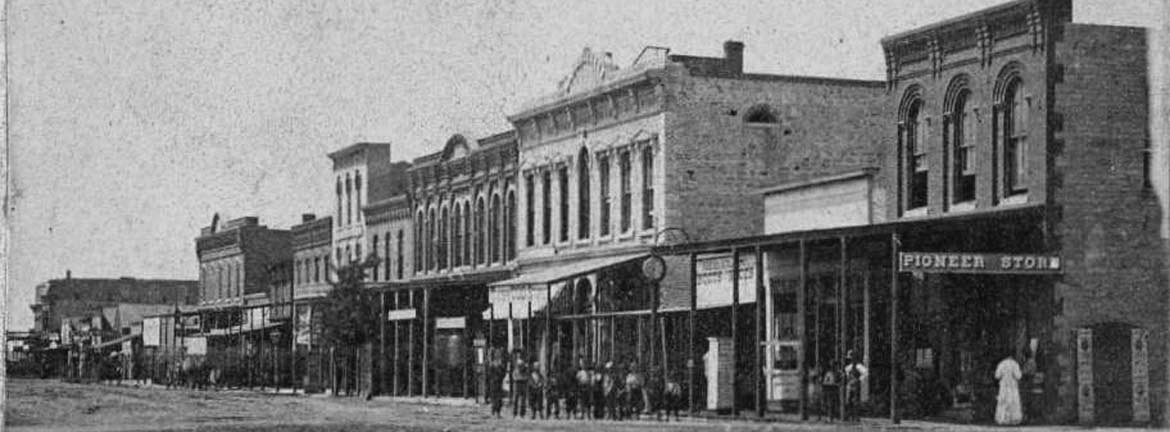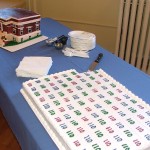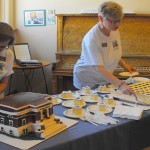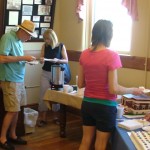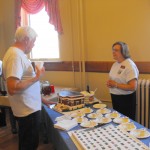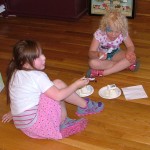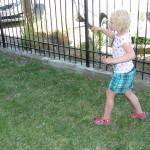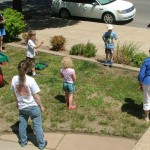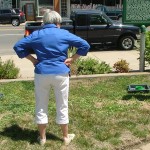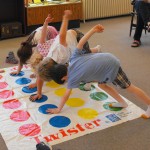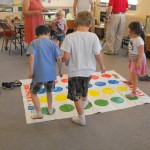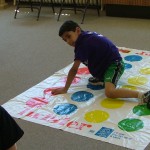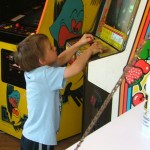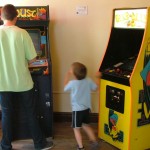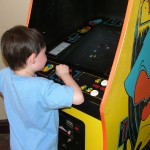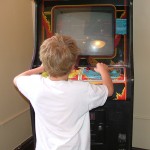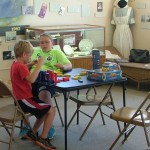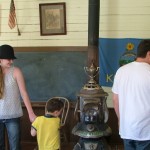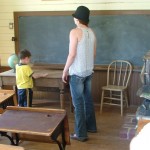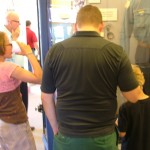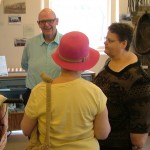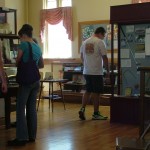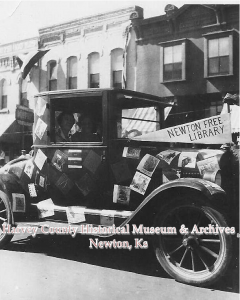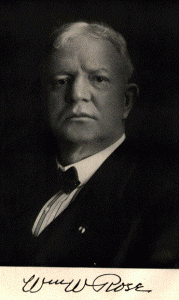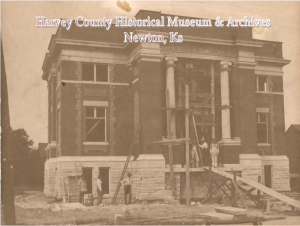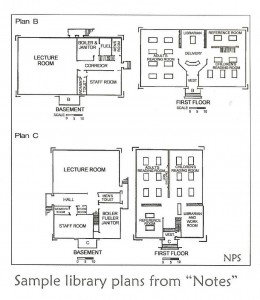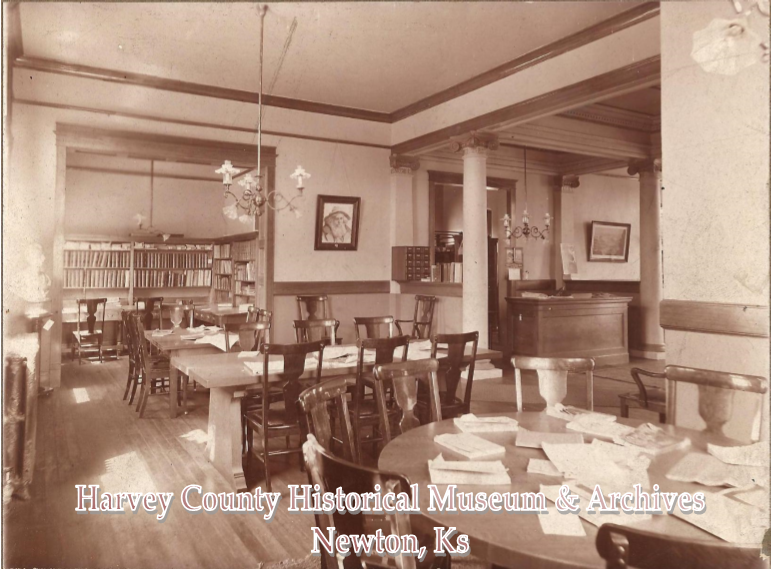By Kristine Schmucker, HCHM Curator
Join us this Saturday, May 3 from 2-4 p.m. for a building birthday party! Explore the museum exhibits, play games and eat birthday cake with us as we celebrate our building’s 110th birthday! A free event.
This post is the second of our two part series featuring our building. For Part 1: https://hchm.org/carnegie-library-part-1/.
“Beautiful and Adequate.”
By 1916 space had become a problem in the library. The Library Board contacted Andrew Carnegie about providing financial support for an addition, but the request was denied. The matter was tabled for several years, but in 1923 the Board began investigating the possibility of an addition.
The architectural firm of Lorenz Schmidt was hired. An addition to the west was constructed. The extension was completed in 1924 and cost $5,000. J.A. Hunter, Library Board President, noted that the addition was “both beautiful and adequate” and more than doubled the available space. The stacks were moved to the new addition and as a result the reading rooms had “an air of unaccustomed roominess which is pleasing and restful.”
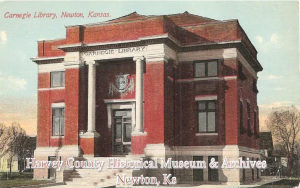
“When rain comes, roof leaks.”
As the building aged, problems began to appear, especially with the roof. In the early 1920s, the librarians began reporting that “when rain comes, roof leaks.” The problem came to a head in June 1926 when two Board members were “caught in the library during a heavy rainstorm.” At the following Board meeting the problem was discussed at length. Local contractors were called in to repair the leaks; however, in what was to become an endless cycle, the roof continued to leak. In 1927, “rubberized roofing” was installed, but in her annual report, Board President Hattie L. Plummer noted that Carnegie Hall was closed to the public because “we cannot keep the room in repair, because we have been unable to stop the roof from leaking.”
In 1928, it was local contractor M.R. Stauffer’s turn to fix the roof. He submitted his bid with “a ten year guarantee against leakage.” At the Board meeting following the completion of his work, the librarian noted it was her “unpleasant duty” to report that the new roof continued to leak. New guttering was installed next and for a number of years this seemed to solve the problem.
By 1950, the Board was dealing with the almost constant problem of roof leaks. Over the years various contractors inspected the roof and attempted to provide solutions. In 1960, M.R. Stauffer was again called upon to inspect the roof and offer a solution. In his report to the Board he noted “that the wrong means of roof repair had been used for years.” He recommended that the metal roof should be painted, rather than covered with tar which led to deterioration. Maintenance of the building would continue to be more and more important as the structure aged.

“My 2nd home when I was a child :).”– Diane Kyle Hendrickson, Facebook post, 15 April 2014
In January 1937, library Board member, John B. Heffelfinger, identified the need for a space for children in the library. Architect Lorenz Schmidt was asked to give an estimate to remodel the basement to include a Children’s Library, office space, meeting room and lounge. M.R. Stauffer was employed as contractor. The Children’s Library was opened in November 1937 with Miss Mary Funk (Mrs. E.E. Roberts) serving as children’s librarian.
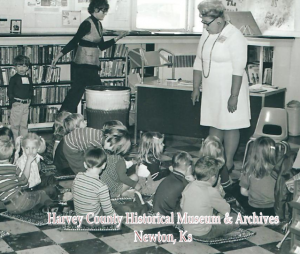
For the next 30+ years children eagerly bounced down the green checkerboard steps to the basement for story time or to check out a stack of books to read at home.
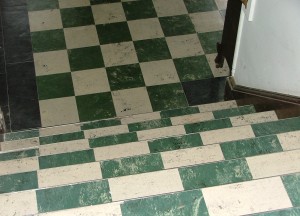
Steps leading to the Children’s Library
“Many . . . realized how important the library was . . .”
“The library is one of the oldest buildings in town, but by repainting the walls, repairing the furniture and fixing the windows, it is a pleasant and comfortable place.” -Mrs. Irene Schroeder, 1949.
As the building aged, other problems began to appear. On December 28, 1953, the heating system, which had served the building since 1904, failed and the library had to close for ten days and “many people realized how important the library was to them.”
Despite the care given to the upkeep of the building by the Library Board and Staff, the world of libraries was changing in the 1960s and 70s. To meet the new expectations and needs of library patrons, a new structure would need to be considered.
In 1962, a serious push was made to construct a new library, but the bond issue was defeated by voters. The time was right in 1972-73, and a new library was constructed on Oak Street near Military Park. At that time, the Carnegie building was deeded to the Harvey County Historical Society for $1.
The Carnegie Library Building was placed on the National Register of Historic Places in 1974 and continues to serve the public as the Harvey County Historical Museum and Archives.
Sources
- HCHM Photo Archives
- National Register of Historic Places Inventory – Nomination Form # 74000840, 1974.
- Allbaugh, Alden. “The Newton Public Library 100 Year History, 1886-1986” HCHM Archives.
- Connelley, William E. A Standard History of Kansas and Kansans. Chicago: Lewis Publishing Co., 1918. “William W. Rose”
- Diericks, Mary B. ,”The Architecture of Literacy Carnegie Libraries in the U.S.” National Trust for Historic Preservation November 3, 2006. http://www.carnegielibraries.pghfree.net/nthp/natltrust-presentation1.pdf
- Gardiner, Allen. Carnegie Legacy in Kansas Kansas State Library, 1985. http://skyways.lib.ks.us/carnegie/page115.html
